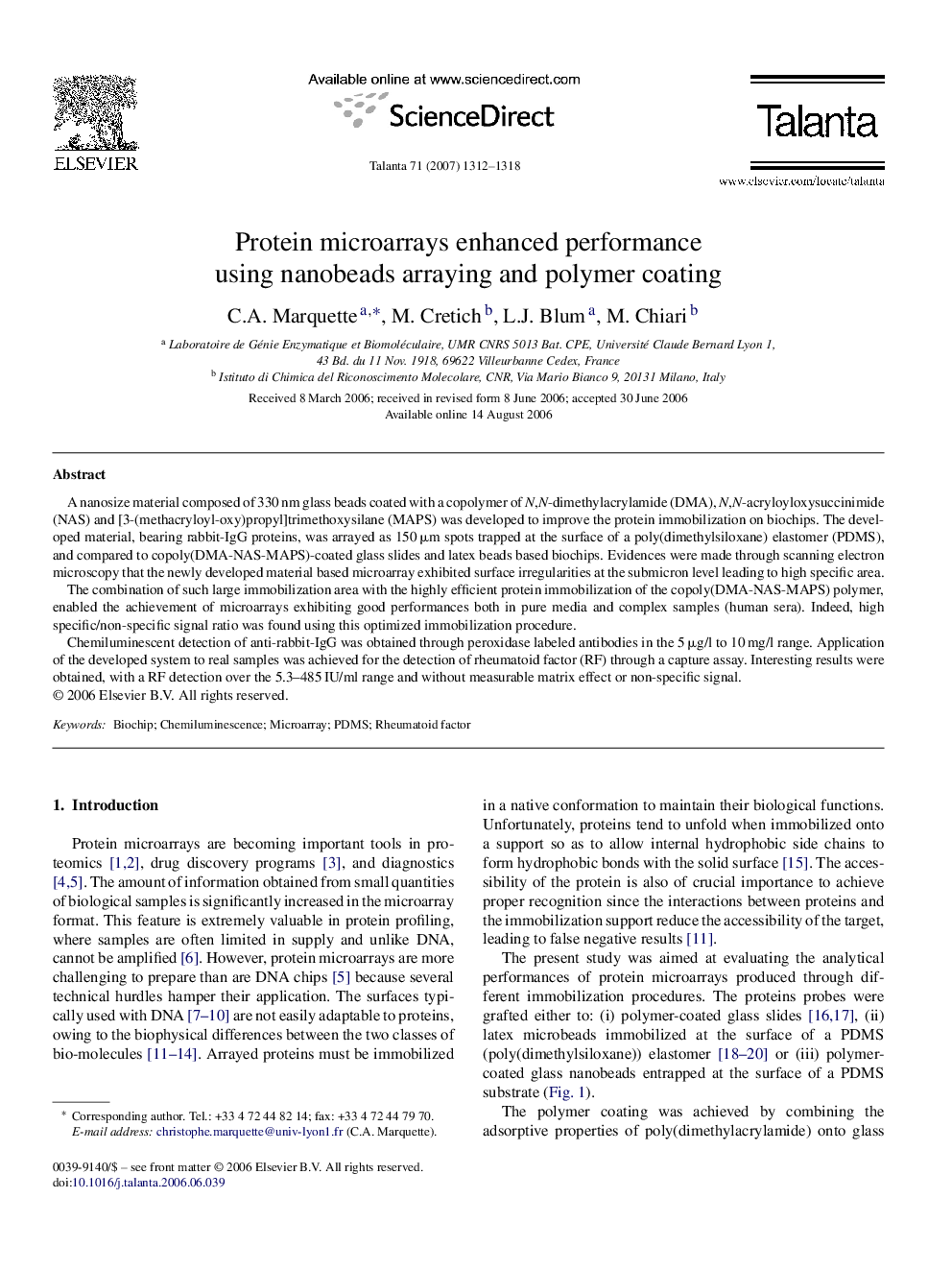| Article ID | Journal | Published Year | Pages | File Type |
|---|---|---|---|---|
| 1246152 | Talanta | 2007 | 7 Pages |
A nanosize material composed of 330 nm glass beads coated with a copolymer of N,N-dimethylacrylamide (DMA), N,N-acryloyloxysuccinimide (NAS) and [3-(methacryloyl-oxy)propyl]trimethoxysilane (MAPS) was developed to improve the protein immobilization on biochips. The developed material, bearing rabbit-IgG proteins, was arrayed as 150 μm spots trapped at the surface of a poly(dimethylsiloxane) elastomer (PDMS), and compared to copoly(DMA-NAS-MAPS)-coated glass slides and latex beads based biochips. Evidences were made through scanning electron microscopy that the newly developed material based microarray exhibited surface irregularities at the submicron level leading to high specific area.The combination of such large immobilization area with the highly efficient protein immobilization of the copoly(DMA-NAS-MAPS) polymer, enabled the achievement of microarrays exhibiting good performances both in pure media and complex samples (human sera). Indeed, high specific/non-specific signal ratio was found using this optimized immobilization procedure.Chemiluminescent detection of anti-rabbit-IgG was obtained through peroxidase labeled antibodies in the 5 μg/l to 10 mg/l range. Application of the developed system to real samples was achieved for the detection of rheumatoid factor (RF) through a capture assay. Interesting results were obtained, with a RF detection over the 5.3–485 IU/ml range and without measurable matrix effect or non-specific signal.
